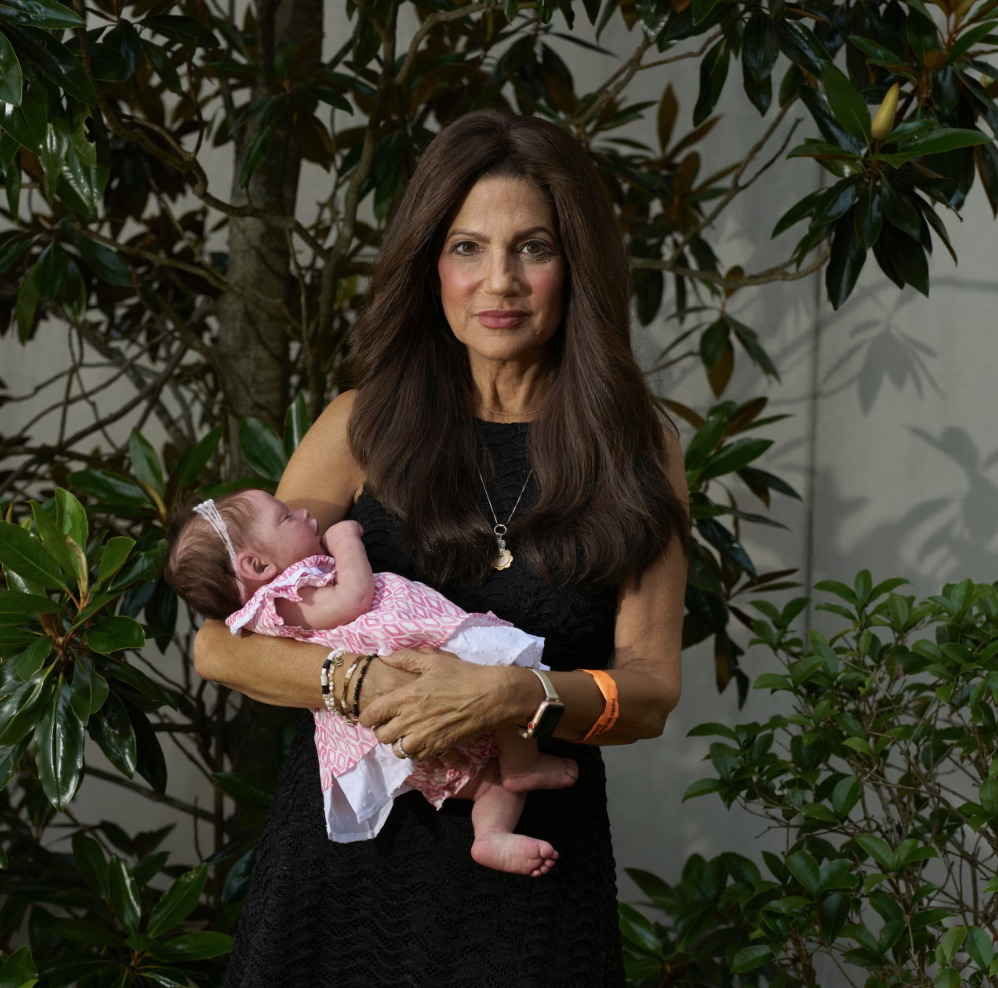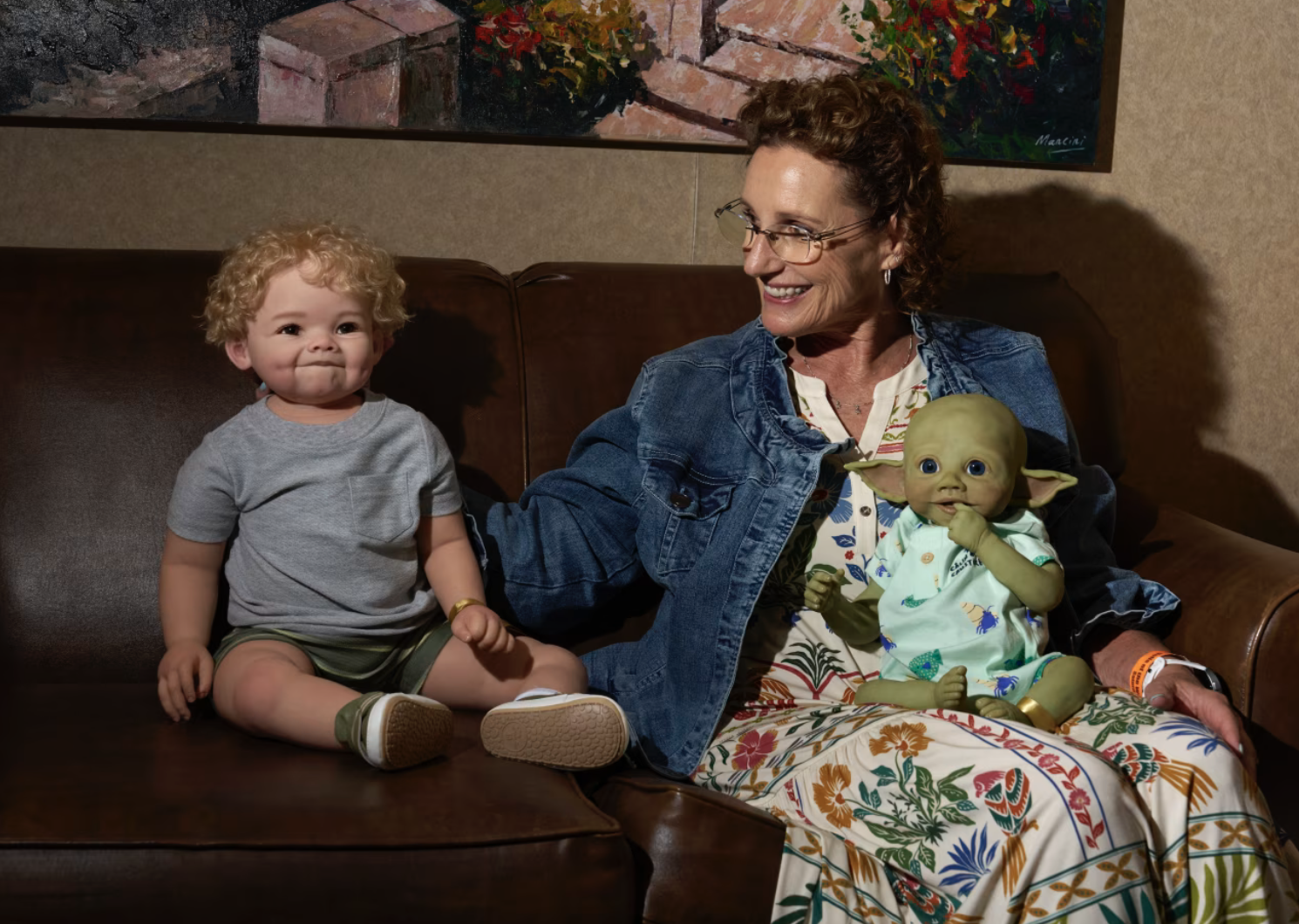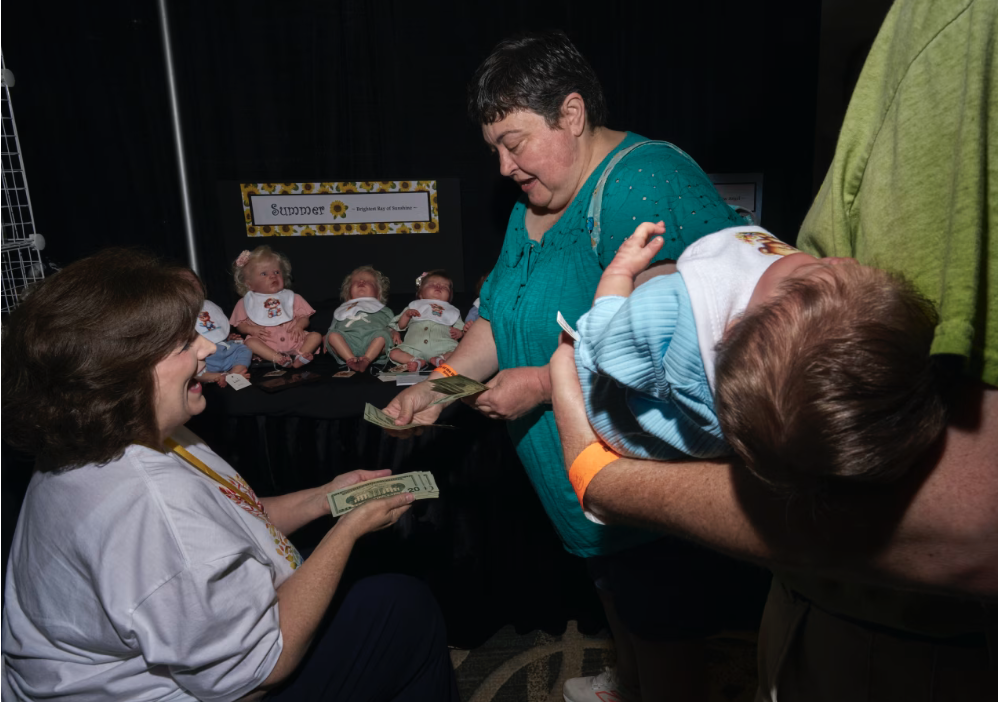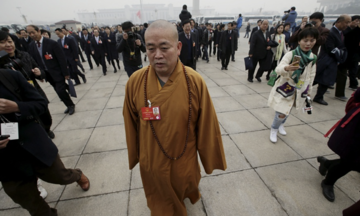"She" was dressed in overalls and a hair bow, sitting in a high-end stroller, accompanying her "mother" on a shopping trip.
Most passersby thought they were an ordinary mother and daughter. But Naomi isn't a real person.
She is a reborn doll, costing 10,000 USD, and part of a global phenomenon. These doll owners consider themselves parents, sparing no expense on luxury items and caring for their "children" as if they were real.
 |
Mia Martone purchased a 6,000 USD reborn doll at a doll fair, despite already having grandchildren. *Photo: Stacy Kranitz/WSJ* |
Reborn doll making is a craft in the US. Artisans meticulously paint faint blue veins onto soft silicone skin, implant each strand of hair on the head and eyebrows to create a lifelike product.
"When I told an artisan that I had never seen anyone carrying a reborn doll in New York, she laughed and replied, 'You have, you just didn't realize it'," Maple recounted.
The hobby of raising dolls as children is controversial. Some owners are ridiculed both offline and online. But for those involved, these dolls offer therapeutic potential, providing comfort to women who have experienced miscarriages or lost children, or to those with Alzheimer's or autism.
At the "World Doll Show" in June, approximately 1,500 people gathered in North Carolina. Booths sold everything from diapers and strollers to baby-scented perfumes.
"People think it's crazy, but it's just like any other hobby," said 21-year-old Hannah Hammond, a teacher. She winced when she saw someone holding her doll, Evie, incorrectly. "You have to support her head," she complained.
 |
Holly Church came to the fair to purchase a 3,200 USD blue-skinned doll, adding to her and her husband's collection. *Photo: Stacy Kranitz/WSJ* |
For doll enthusiasts, the fair is a rare safe space to indulge their passion. Many save for a whole year to afford a doll costing thousands of dollars.
"Our community receives a lot of criticism," said Sally McMahon of Massapequa Park, New York. "They call us doll-crazy."
While the outside world finds these lifelike child dolls "creepy," enthusiasts find comfort in them. Keith and Dia Harris, 63 and 51, have five children and seven grandchildren, yet they attended the fair with two reborn dolls. At home, they have a separate room with bunk beds so their grandchildren can sleep with the dolls when they visit.
Holly Church bought a 3,200 USD doll. Her husband is building a separate shed in the yard to house her collection. When her son said he couldn't understand her passion, she replied, "You don't have to understand, just respect it."
Church's friend, Mia Martone, spent 6,000 USD on a doll. Despite having grandchildren, she admitted, "Sometimes I just want a baby that never cries."
The dolls can also help with healing. Katherine Hansell uses a doll named Crystal to teach about love and care to her adopted daughter, who experienced an abusive childhood. "We say that Crystal has never been hurt," Hansell shared.
 |
Many save all year to afford a reborn doll costing thousands of dollars at the doll fair in New York. *Photo: Stacy Kranitz/WSJ* |
Creating these dolls is also emotionally taxing. Dorothy Blue, an artisan, said that making replicas for bereaved mothers is heartbreaking. "Frankly, recreating a deceased baby haunts us," Blue said.
Despite the high selling price, few artisans become wealthy due to the labor-intensive process, compounded by economic difficulties and cheap counterfeits from China.
But for Maple and others, it's not just about business. "I've been through a lot, and these dolls have really helped my mental health," she said.
Nikki Johnston, a British artisan, compared reborn dolls to a controversial dish: "You either love them or hate them."
Minh Phuong (*Via WSJ*)












